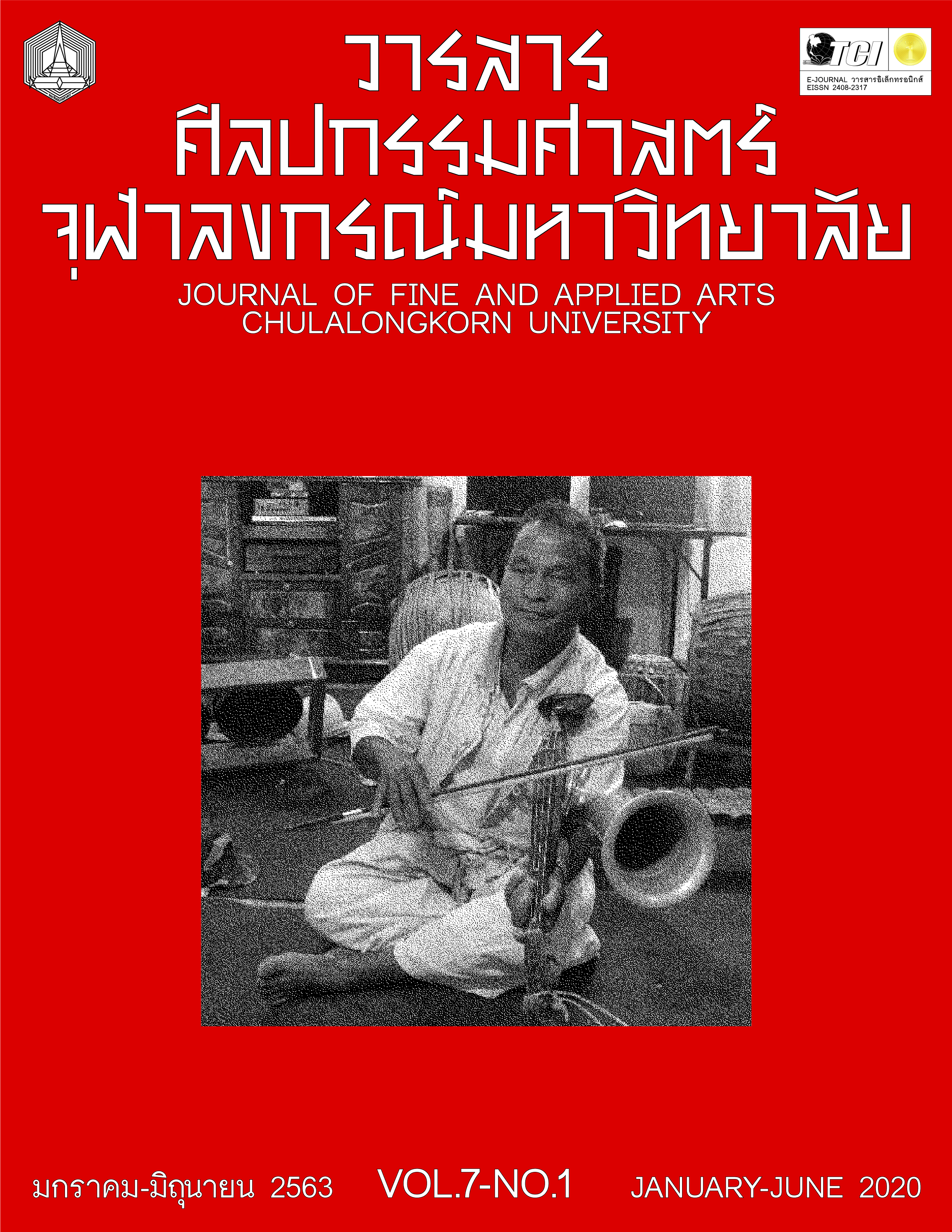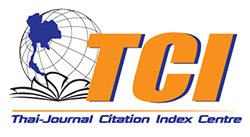ความสำคัญของ ‘เพลงเรื่อง’ ต่อการพัฒนาศักยภาพนักดนตรีไทย
Keywords:
เพลงเรื่อง, ศักยภาพนักดนตรี, นักดนตรีไทย, Phleng-ruang, Potential of Musician, Thai musiciansAbstract
บทคัดย่อ
การวิจัยเรื่อง “ความสำคัญของ ‘เพลงเรื่อง’ ต่อการพัฒนาศักยภาพนักดนตรีไทย” มีวัตถุประสงค์เพื่อศึกษาโครงสร้างของเพลงเรื่องในวงวิชาการดนตรีไทย และเพื่อศึกษาความสำคัญของเพลงเรื่องต่อการพัฒนาศักยภาพนักดนตรีไทย การวิจัยใช้ระเบียบวิธีวิจัยด้านมานุษยดนตรีวิทยา (Ethnomusicology) ดำเนินการตั้งแต่เดือนตุลาคม 2555 ถึงเดือนตุลาคม 2557 การศึกษาและสังเคราะห์มีข้อมูลเพลงเรื่องจำนวน 101 เรื่อง ด้วยกระบวนการปฏิบัติงานภาคสนาม การเข้าไปมีส่วนร่วมในกิจกรรมดนตรี พิธีกรรม งานตามประเพณี และดำเนินการตามกรอบแนวความคิดในการวิจัย ผลวิจัยมีดังนี้
โครงสร้างของเพลงเรื่องในวงวิชาการดนตรีไทย ประกอบด้วยเพลงเรื่อง 6 โครงสร้าง คือ โครงสร้างที่นำด้วยเพลงประเภทปรบไก่ โครงสร้างที่นำด้วยเพลงประเภทสองไม้ โครงสร้างเพลงเรื่องประเภทเพลงเร็ว โครงสร้างที่เป็นประเภทเพลงฉิ่ง โครงสร้างเพลงเรื่องที่ใช้ในงานพิธีหรือพิธีกรรม และโครงสร้างที่เป็นเพลงเรื่องประเภทเพลงนางหงส์ เพลงต่าง ๆ ที่ประกอบเข้าเป็นสำรับของเพลงเรื่องแต่ละโครงสร้าง มีเพลงประเภทปรบไก่ ประเภทสองไม้ ประเภทเพลงเร็ว และประเภทเพลงฉิ่ง
ความสำคัญของเพลงเรื่องต่อการพัฒนาศักยภาพนักดนตรีไทย พบว่า เพลงเรื่องเป็นเพลงชุดที่มีการเรียบเรียงเพลงต่าง ๆ เข้าไว้ด้วยกัน ในระบบการเรียนดนตรีไทยมีแนวที่ดำเนินมาแต่โบราณคือการต่อเพลงโดยตรงระหว่างครูกับศิษย์ซึ่งเป็นวิธีทางมุขปาฐะ นักดนตรีที่ต่อเพลงเรื่องได้จำนวนมากจึงมีโอกาสฝึกทักษะปฏิบัติเครื่องดนตรี เกิดความชำนาญ เกิดความรู้เข้าใจโครงสร้างของเพลง เทคนิควิธีบรรเลงที่มีความยากและซับซ้อน เกิดความแตกฉานในวิชาการดนตรีไทย จนนำไปสู่ศักยภาพการบรรเลงดนตรีในงานหรือกิจกรรมตามประเพณีไทย มีความสามารถในการแปรทำนองเนื้อทำนองเพลงหลักไปสู่รูปแบบวิธีการบรรเลงเครื่องดนตรีชนิดต่าง ๆ การวิเคราะห์แนวทำนองเพลง การบรรเลงเพลงเดี่ยวระดับขั้นฝีมือ และมีศักยภาพในการสร้างสรรค์ดนตรีในระดับของการประพันธ์เพลงไทยขึ้น
Abstract
The purpose of the research “The Significance of Phleng-rueang towards the Development of Potential of Thai Musicians” aimed to study the structure of Phleng-rueang in the essence of Thai Music, as well as study its significance towards the potential development of Thai musicians. Research methodology was based on Ethnomusicology theory and procedures, having research time span covering October 2012 to October 2014. The synthesis and analysis of 101 Phleng-rueangwas conducted along with fieldwork operation in order to access to the heart of the music in the ceremonies and festivals.
The result of the research would be to categorize the structure of Phleng-rueang into 6 structures including Prop-kai structure, Song-maai structure, Phleng-reao structure, Phleng-ching structure, ceremonial music structure, and Nang-hongstructure. The internal structure of Phleng-rueang was comprised of prop-kairepertoire, song-maai repertoire, reao repertoire, and ching repertoire.
Since phleng-rueang comprised of several songs organized in a collection similar to a suite, the study of phleng-rueang provided an understanding of a wide variety of Thai music scholarship as well as performance techniques. Moreover, since the study of Thai music was within the oral tradition, a musician who studied phleng-rueang, inherits with the skill and knowledge that had been passed down from Thai music masters for generations. As a result, their musical potential was developed and they gain mastery of the performance in all Thai music cultures. These potentials included skill in melodic variation and modification, skill in arranging and creating transcriptions for other instruments, improvisation techniques, a scholarship in melodic analysis, composing new Thai music, as well as enhancing the solo performance at a virtuosic level.
Downloads
Published
Issue
Section
License
ลิขสิทธิ์ของบทความเป็นของเจ้าของบทความ บทความที่ได้รับการตีพิมพ์ถือเป็นทัศนะของผู้เขียน
กองบรรณาธิการไม่จำเป็นต้องเห็นด้วยและไม่รับผิดชอบต่อบทความนั้น






